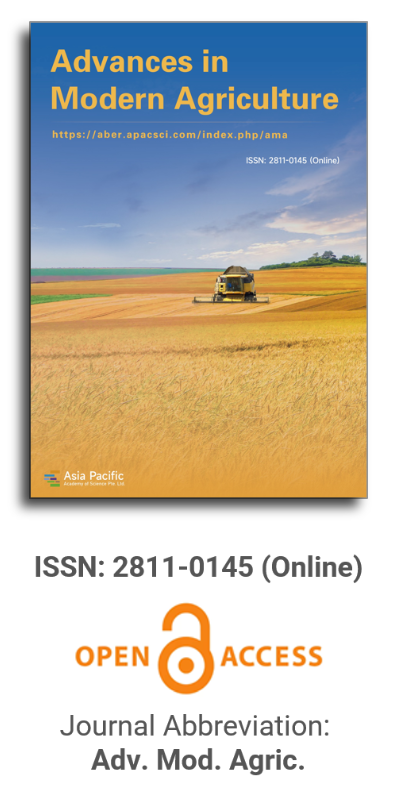


Although many indigenous and peasant populations are particularly exposed to the impacts of climate change and are vulnerable, some communities are actively responding to the changing climate and have demonstrated innovation and resilience, using a diversity of strategies to cope with droughts, floods, hurricanes, etc. In this article, we argue that traditional farming systems offer a wide range of management options and designs that increase functional biodiversity in crop fields, thereby enhancing the resilience of agroecological systems. Many of the traditional agroecological strategies that reduce vulnerability to climate variability include crop diversification, maintenance of local genetic diversity, animal integration, addition of organic matter to the soil, water harvesting, etc. Several agroecologists have deciphered the agroecological principles underlying these strategies, which can be adapted by taking different technological forms (according to farm size) to design modern agricultural systems that become increasingly resilient to climatic extremes.
At a global level, there is a growing concern about the sustainability of agricultural production models. In particular, the impacts and environmental passives derived from the implementation of the principles of the so-called Green Revolution. In contrast, agroecology gains supporters in the context of a different productive model, though limited due to lower levels of agricultural productivity. Nevertheless, for any of these models to come into practice, it has to go through farmers’ decision-making. Thus, acknowledging the key role played by rural extensionists in farmers’ decision-making process, in this article the extensionists’ personal positioning and that of their institutions are analyzed in the context of the contrast between agroecology and conventional agriculture. A total of 583 rural extensionists who work in the National Institute of Agricultural Technology, the Subsecretariat of Family Farming and Territorial Development, and other Argentine institutions replied to an online questionnaire. It included sociodemographic questions and asked to position oneself and one’s institution using a five-level Likert-type item, in which agroecology and conventional agriculture were the poles. Results show that, on average, extensionists have a tendency towards the agroecological pole, while they situate their institutions halfway between both agricultural models. In general, women, who have no university degree, and who hold a degree in social sciences, are more oriented to the agroecological pole.
The modern agricultural demonstration area is of far-reaching significance to promote the development of modern agriculture. According to the current situation of agricultural industry development in Shijiazhuang, this paper analyzes the development conditions of establishing a national modern agricultural demonstration zone, puts forward the basic ideas, development orientation, and development countermeasures of building a national modern agricultural demonstration zone, and analyzes the guarantee measures for its development in order to build Shijiazhuang into a national modern agricultural demonstration zone.
An evaluation model was established using a combination of AHP and multi-objective linear weighted function methods to comprehensively evaluate the development level of modern agriculture in the contiguous poverty-stricken areas of Lvliang Mountain in Shanxi Province. The results show that: (1) As a whole, the contiguous poverty-stricken areas have a low degree of agricultural modernization and are in the initial stage of development. The degree of modernization of agricultural production conditions, agricultural production results, and farmers’ living standards is gradually decreasing; at the municipal level, the degree of agricultural modernization in the three cities is the same. Not high, the order is Xinzhou City > Linfen City > Lvliang City; at the county level, the degree of agricultural modernization varies greatly. The counties in Xinzhou City are in the high-level sub-stage of the initial stage, and the counties in Lvliang City are in the low-level sub-stage of the initial stage. The overall degree of agricultural modernization in counties shows a spatial pattern of low in the middle and high in the north and south; (2) The contributions of agricultural production conditions, production results and farmers’ living standards to modern agriculture are 16.4%, 29.7% and 53.9% respectively. The low level of agricultural electrification and mechanization and backward production conditions are bottlenecks in the development of modern agriculture. The backward agricultural production conditions lead to inefficient production results, low disposable income of farmers, and low living standards of farmers, which are the root causes of the slow development of modern agriculture in the region.
Objective: Improving water use efficiency and ameliorating pollution is a challenge facing agriculture, and this paper aims to present an experimental study on the efficacy of different irrigation methods in saving water and reducing pollution in paddy fields in an attempt to provide suitable management for paddy fields in plain regions. Method: We examined three irrigation methods: flooding irrigation, shallow-water irrigation, and rain-collecting irrigation in Pinghu, Zhejiang province. For each irrigation, we measured TN, TP, NH4+-H, NH3-N, and COD in both irrigation water and drainage water. Result: Compared with flooding and shallow-water irrigation, rain-collecting irrigation reduced the amount of irrigation water by 67.4% and 43.4%, TN loss by 86.9% and 90.7%, emissions of NH4+-H by 96.7% and 98.3%, and COD emissions by 61.5% and 62.5%, respectively. The difference in change of TP and NH3-N between all three irrigation methods was not significant. Conclusion: For the areas we studied, rain-collecting irrigation is most effective in saving water and reducing pollution.

Prof. Zhengjun Qiu
Zhejiang University, China

Cheng Sun
Academician of World Academy of Productivity Science; Executive Chairman, World Confederation of Productivity Science China Chapter, China
Indexing & Archiving
In the realm of modern agriculture, the integration of cutting-edge technologies is revolutionizing the way we approach sustainable farming practices. A recent study published in Advances in Modern Agriculture titled "Classification of cotton water stress using convolutional neural networks and UAV-based RGB imagery" has garnered significant attention for its innovative approach to precision irrigation management. Conducted by researchers from Institute of Data Science and the AgriLife Research and Extension Center of Texas A&M University (authors's information is below). This study introduces a novel method for classifying cotton water stress using unmanned aerial vehicles (UAVs) and convolutional neural networks (CNNs), offering a powerful solution for optimizing water use in agriculture.
Modern agricultural technology is evolving rapidly, with scientists collaborating with leading agricultural enterprises to develop intelligent management practices. These practices utilize advanced systems that provide tailored fertilization and treatment options for large-scale land management.
This journal values human initiative and intelligence, and the employment of AI technologies to write papers that replace the human mind is expressly prohibited. When there is a suspicious submission that uses AI tools to quickly piece together and generate research results, the editorial board of the journal will reject the article, and all journals under the publisher's umbrella will prohibit all authors from submitting their articles.
Readers and authors are asked to exercise caution and strictly adhere to the journal's policy regarding the usage of Artificial Intelligence Generated Content (AIGC) tools.
Asia Pacific Academy of Science Pte. Ltd. (APACSCI) specializes in international journal publishing. APACSCI adopts the open access publishing model and provides an important communication bridge for academic groups whose interest fields include engineering, technology, medicine, computer, mathematics, agriculture and forestry, and environment.


 Open Access
Open Access

.jpg)
.jpg)

.jpg)
